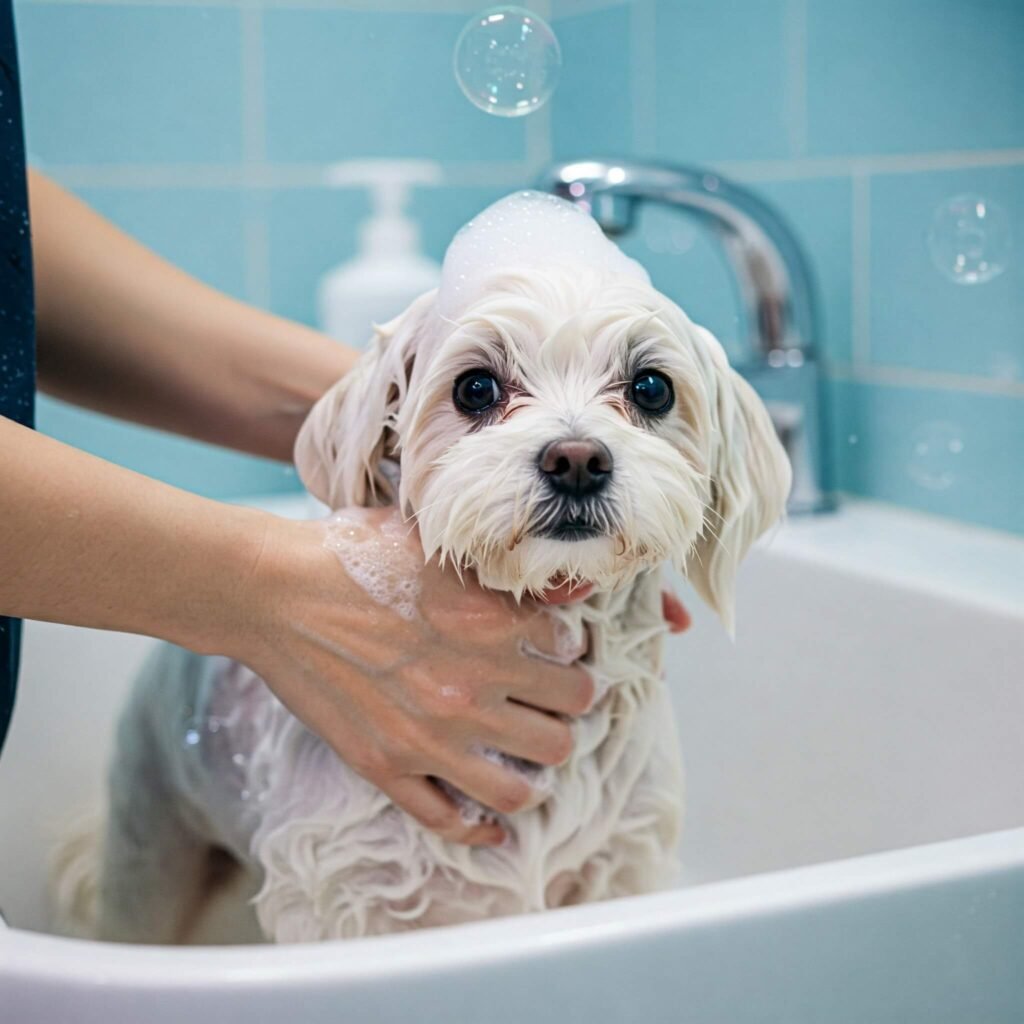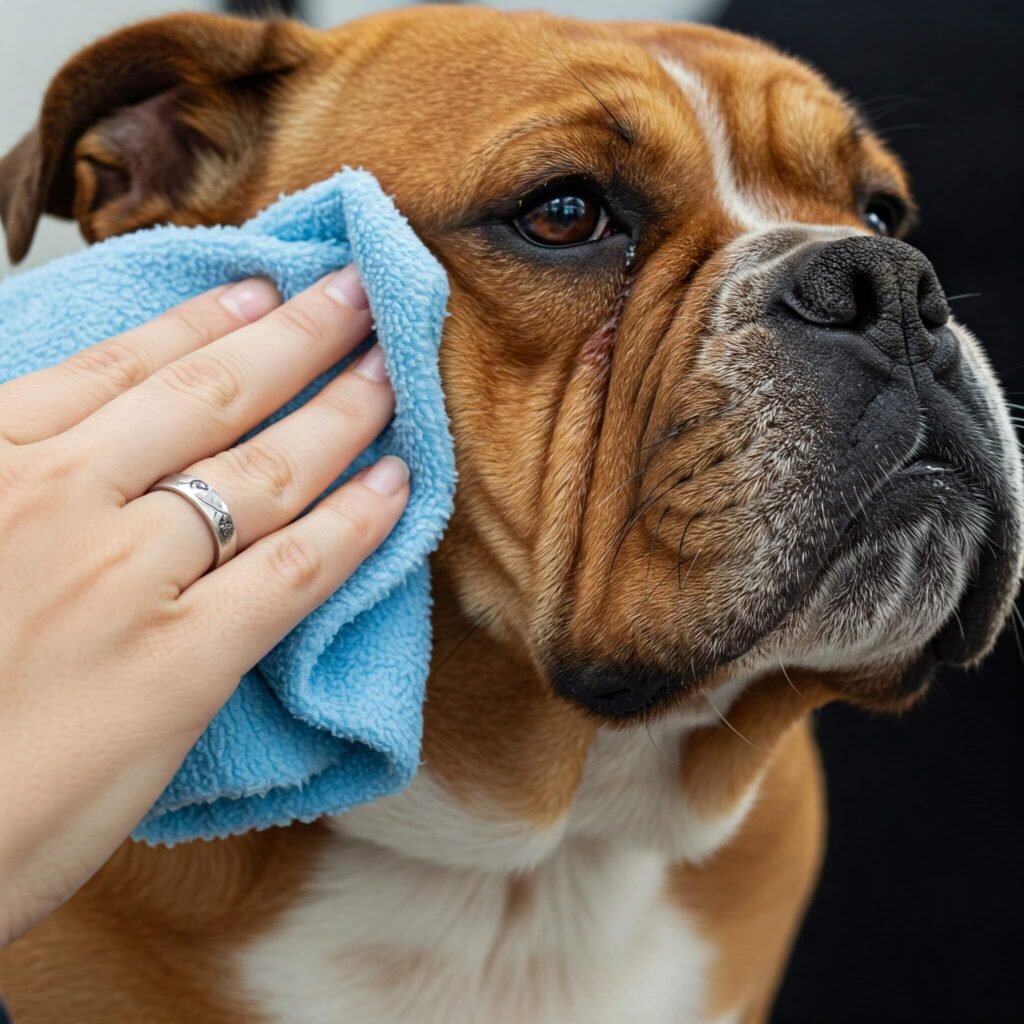As a devoted dog parent, you want the best for your furry friend, including cleanliness and health. When considering how often should you bathe your dog, the answer isn’t always simple. Over-bathing can strip natural oils, causing dry skin and irritation. Conversely, under-bathing leads to odors and potential skin issues. Therefore, this guide will help you find the perfect bathing routine for your dog’s breed. We’ll explore the ideal dog bathing frequency for their optimal well-being.
Understanding the Basics of Dog Bathing Frequency
The ideal schedule for how often to bathe dog varies. Key factors include breed, lifestyle, and skin condition. For instance, some dogs with oily coats or outdoor lifestyles need more frequent baths. On the other hand, others with drier skin or indoor lives can go longer. Understanding these basics is crucial to determining the right dog bath schedule.
Breed-Specific Bathing Guidelines: Finding Your Dog’s Sweet Spot for Cleanliness
To truly understand how often to bathe dog, let’s look at breed-specific advice. Nevertheless, remember these are general guidelines. Individual needs may vary when deciding the best dog grooming routine.
Low-Maintenance Breeds: Determining the Right Dog Bath Schedule (Every 2-3 months or as needed)
These breeds often have drier skin and shorter coats. Consequently, these coats don’t trap much dirt or odor, influencing how often you need to consider bathing your dog.
- For example, Basenjis are clean dogs and rarely need baths, impacting your decisions about dog bathing frequency.
- Similarly, Beagles have short, dense coats that don’t usually hold much dirt, reducing the need for frequent dog grooming.
- Furthermore, Doberman Pinschers have smooth, short coats requiring minimal bathing, affecting their individual dog hygiene needs.
- Likewise, Greyhounds’ sleek coats stay relatively clean, meaning you won’t need to think about their dog bath schedule as often.
- Finally, Whippets, like Greyhounds, don’t need frequent baths, influencing their specific bathing your dog routine.

Medium-Maintenance Breeds: Establishing a Consistent Dog Grooming Routine (Every 1-2 months)
These breeds have slightly longer or denser coats. Thus, they might benefit from more regular cleaning, influencing their required how often to bathe dog frequency.
- For instance, Labrador Retrievers love water but don’t need weekly baths unless very dirty, a key consideration for their dog bathing frequency.
- Moreover, German Shorthaired Pointers have short, water-repellent coats that benefit from occasional baths, determining their ideal dog bath schedule.
- In addition, Boxers have short, smooth coats that are easy to maintain, affecting their individual dog hygiene needs.
- However, Australian Shepherds have medium double coats that can trap some dirt, increasing the frequency of bathing your dog.
- Consequently, Border Collies’ active lifestyles might mean more frequent baths, influencing their specific how often to bathe dog needs.
High-Maintenance Breeds: Figuring Out the Ideal Dog Hygiene Practices (Every 2-4 weeks)
These breeds often have oily skin, longer coats, or get dirty easily. Therefore, this requires more frequent thought about their how often to bathe dog requirements.
- Consider, for example, Shih Tzus, whose long, flowing coats need regular grooming and bathing, impacting their dog bathing frequency.
- Similarly, Lhasa Apsos also need regular bathing, much like Shih Tzus, influencing their dog bath schedule.
- Furthermore, Maltese have white, silky coats that show dirt easily, increasing the need for attention to their dog grooming.
- Moreover, Bichon Frises have curly white coats needing frequent washing to maintain fluffiness and prevent matting, a key aspect of their dog hygiene.
- Finally, Poodles (Standard, Miniature, Toy) have curly coats that trap dirt. They require regular grooming and bathing, affecting their specific bathing your dog routine.

Breeds with Special Bathing Considerations for Optimal Skin Health:
- Firstly, Hairless Breeds (e.g., Chinese Crested Hairless) need frequent bathing (weekly or bi-weekly). This removes oil and dirt buildup, promoting good dog skin health. Additionally, they also need moisturizing to prevent dryness, further influencing their how often to bathe dog needs.
- Secondly, Wrinkled Breeds (e.g., Bulldog, Pug) have wrinkles that trap moisture and bacteria. Thus, they need regular cleaning (often daily wiping and less frequent full baths) to prevent infections and maintain dog skin health. This impacts their individual dog hygiene practices.
- Lastly, Double-Coated Breeds (e.g., Siberian Husky, Golden Retriever) don’t need frequent baths (every 6-8 weeks often suffices). Proper technique and shampoo are key to avoid undercoat damage and maintain their natural dog skin health. Indeed, excessive bathing can disrupt their natural insulation, highlighting the importance of understanding their specific bathing your dog requirements.

Beyond Breed: Other Factors Influencing Bath Frequency
While breed is key, other elements are also crucial in deciding how often to bathe your dog.
- For instance, a dog’s activity level greatly impacts bathing needs. Consequently, active outdoor dogs, especially those who get muddy or swim, need more frequent baths, a key consideration for their dog bathing frequency.
- Moreover, a dog’s skin condition is paramount. Therefore, dogs with allergies, sensitive skin, or specific conditions might need medicated shampoos. Bathing frequency may vary based on vet advice, directly impacting their dog bath schedule.
- Furthermore, odor clearly indicates when to consider a bath. If your dog smells unpleasant, they need one, regardless of their breed’s typical schedule, influencing their required dog hygiene.
- Finally, coat type matters. Generally, long-haired breeds need more frequent grooming and bathing to prevent mats and tangles compared to short-haired breeds, affecting their specific bathing your dog routine.
Tips for a Positive Dog Bathing Experience
Making bath time positive helps both you and your dog, regardless of their individual how often to bathe dog needs.
- To begin with, start puppy baths early to acclimate them.
- Subsequently, use positive reinforcement with treats, praise, and a calm demeanor.
- Next, prepare shampoo, towels, and grooming tools beforehand.
- Then, use lukewarm water, avoiding hot or cold.
- Additionally, protect ears by gently placing cotton balls inside.
- Furthermore, use dog-specific shampoo. Human shampoo can be too harsh for proper dog skin health.
- Afterward, rinse thoroughly. Ensure all shampoo is out.
- Finally, dry them well with a towel. If your dog tolerates it, use a low-heat hairdryer.
- Ultimately, make it fun with gentle massage and playful interaction, fostering a positive association with bathing your dog.
Conclusion: Finding the Right Bathing Balance for Your Canine Companion
Determining the ideal how often should you bathe your dog schedule is personal. Consider your dog’s breed, lifestyle, and needs. This helps establish a routine for cleanliness and health. Therefore, remember to watch for signs like odor or dirt. Adjust your schedule accordingly. When in doubt, consult your veterinarian or a professional groomer for advice on your dog’s specific dog grooming and dog hygiene requirements.








































